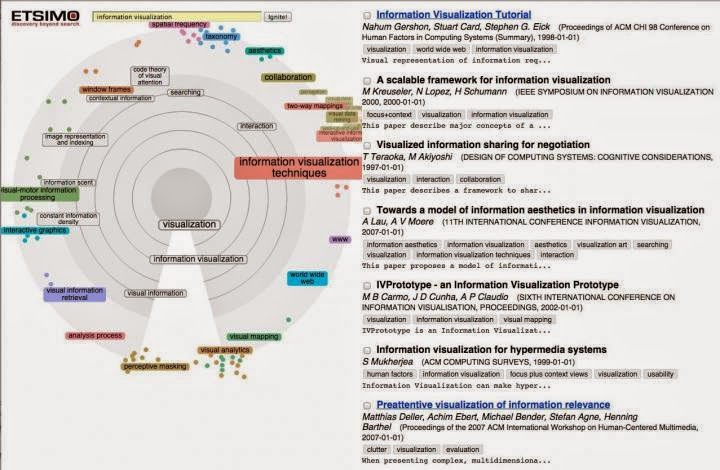| Online: | |
| Visits: | |
| Stories: |

| Story Views | |
| Now: | |
| Last Hour: | |
| Last 24 Hours: | |
| Total: | |
New Search Engine Lets Users Look For Relevant Results Faster
Researchers at the Helsinki Institute for Information Technology HIIT have developed a new search engine that outperforms current ones, and helps people to do searches more efficiently.
The SciNet search engine is different because it changes internet searches into recognition tasks, by showing keywords related to the user’s search in topic radar. People using SciNet can get relevant and diverse search results faster, especially when they do not know exactly what they are looking for or how to formulate a query to find it.
According to some estimate the digital universe such as data and documents is expected to grow by 2020 by a factor of 10. Tools that help us transform the time we spend in searching into discovering and understanding information will be increasingly important to enhance productivity and creativity. It is exciting to be addressing this problem in research that needs competencies from different disciplines as we uniquely combine at HIIT, states Professor Giulio Jacucci.
When people are uncertain about a topic, they are typically reluctant to reformulate the original query, even if they need to in order to find the right information. With the help of a keyword cloud, people can more quickly infer which of the search options they receive is more significant for them because they do not need to visit the pages offered by the search engine to find new search words and start again.
-It’s often hard for people to put what they are looking for into words. Their search needs often do not become more focused until they begin the actual search. The SciNet search engine solves these problems. It’s easier for people to recognise what information they want from the options offered by the SciNet search engine than it is to type it themselves, says the project’s coordinator, Tuukka Ruotsalo.
The SciNet search engine and the related user modelling were developed at the Helsinki Institute for Information Technology, HIIT, which is a joint research institute of Aalto University and the University of Helsinki in Finland. On the basis of HIIT’s research, the company Etsimo Ltd. was founded to commercialize the search engine, which concentrates on supporting complicated searches.
An article on SciNet and its related modeling solutions, “Interactive Intent Modeling: Information Discovery Beyond Search,” was recently published in the prominent computing and information technology journal, Communications of the ACM.
Source: http://www.ineffableisland.com/2015/01/new-search-engine-lets-users-look-for.html




